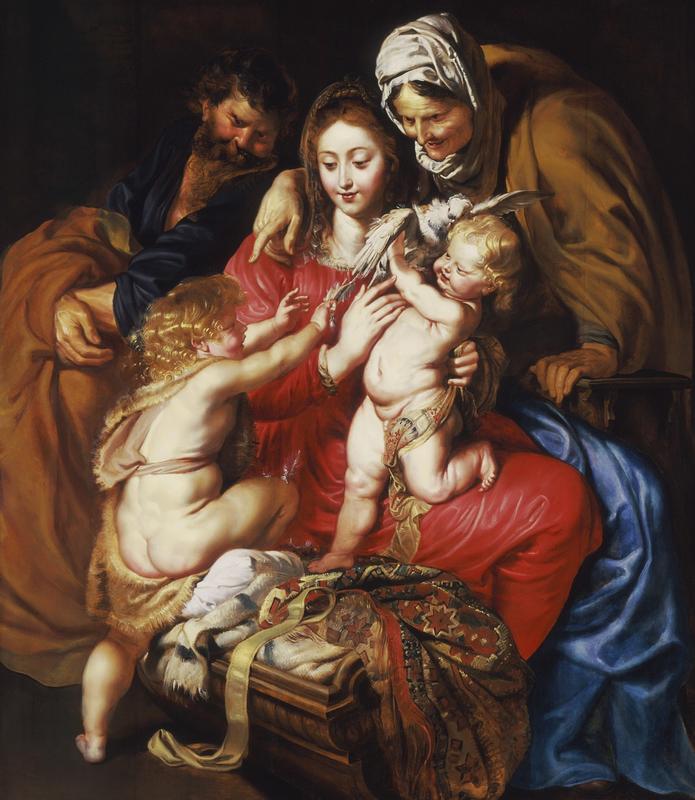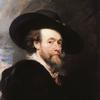More about The Holy Family with St. Elizabeth, St. John, and a Dove

Sr. Contributor
The treatment of the poor dove in this scene by Peter Paul Rubens has me on the brink of dialing PETA’s phone number.
I can’t be the only one put off by the loving looks these three adults are casting on a pair of babies who are obviously manhandling the dove. But this is no ordinary scene of animal abuse, so don’t cue the Sarah McLachlan music just yet. This is a religious painting, so everything is purely symbolic. I assure you that no doves were harmed in the making of this. Rubens lifted the visual motif of the roughly handled dove from the dramatic, contemporary Baroque art that he saw during a long and enlightening trip to Italy in 1600.
For eight years, Rubens soaked in as much Italian art history as he could, feeling particularly pulled to the Italian Renaissance masters and the Baroque artists, especially Caravaggio. This was a prime time for Rubens to bring all that he learned back to his native country of Flanders in the Southern Netherlands. During this time, Spain ruled the region and established Catholicism as the official religion, creating a huge demand for Catholic themes and imagery – just like the art being produced in Italy at the time. The time Rubens spent abroad inspired his unique blend of Italian influences with Netherlandish ideas. In this painting, Rubens emphasizes the voluminous folds in the fabric, perhaps referencing the Flemish region’s rich history of textile and tapestry production.
After returning to his homebase in Antwerp, Rubens embarked on a fifteen-year journey of pumping out a huge number of religious paintings like this one. At the time, Antwerp was the leading port of the Southern Netherlands, making it a city rife with wealthy merchants itching to buy Rubens’s art. Of course, Rubens could not have met this demand single-handedly. He was equal parts artist and entrepreneur, and his art making became a savvy business venture. He established a large workshop with a team chock full of apprentices and students that helped him churn out these sought-after religious works by the dozens. This painting is particularly special, as it is one of the acclaimed artist’s autographic works, which means that he created this piece without the help of his workshop.
Sources
- Artsy. “Peter Paul Rubens: The Holy Family with St. Elizabeth, St. John, and a Dove.” Artworks. https://www.artsy.net/artwork/peter-paul-rubens-the-holy-family-with-st…. Accessed 5 May 2020.
- Davies, Penelope J.E., Frima Fox Hofrichter, Joseph Jacobs, Ann M. Roberts, and David L. Simon. Janson’s Basic History of Western Art. 8th edition. Upper Saddle River, NJ: Pearson Education, Inc., 2009.
- Encyclopaedia Britannica. “St. John the Baptist.” Biography. https://www.britannica.com/biography/Saint-John-the-Baptist. Accessed 5 May 2020.
- Flanders Today. “Material World.” http://www.flanderstoday.eu/living/material-world. Accessed 5 May 2020.
- Liedtke, Walter. “Peter Paul Rubens (1577–1640) and Anthony van Dyck (1599–1641): Paintings.” In Heilbrunn Timeline of Art History. Department of European Paintings. The Metropolitan Museum of Art. October 2003. https://www.metmuseum.org/toah/hd/rvd_p/hd_
- The Metropolitan Museum of Art. “The Holy Family with Saint Elizabeth, Saint John, and a Dove.” Collection. https://www.metmuseum.org/art/collection/search/437529. Accessed 5 May 2020.













